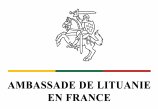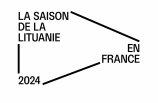Abstract
Since the 19th century, the Lithuanian language, a member of the Baltic family of Indo-European languages, has attracted the attention of numerous linguists in Western Europe. Several ethnographic and linguistic collecting trips to Lithuania were undertaken by such famous linguists as August Schleicher (1821-1868), Karl Brugmann (1849-1919) and Ferdinand de Saussure (1857-1913). The recent discovery, at the Collège de France, of notes taken around 1920 by linguist Antoine Meillet (1866-1936) on the Lithuanian language shows that this interest extended beyond the 19th century; indeed, it continues to this day.
The aim of this paper is to give an overview of the Lithuanian language, its position in the language family and its main linguistic features, in order to explain why this language has attracted so many linguists.
Three aspects that make Lithuanian so fascinating to linguistswill be discussed: firstly, its linguistic archaism, which makes it the most conservative language in the entire Indo-European family, on a par with the great ancient languages of Greek, Latin and Sanskrit; its areal position at the crossroads of the languages of the Eastern Baltic, whether Indo-European (Polish, Russian, German) or non-Indo-European (Fennic languages); and finally, its typological singularity, which makes it a particularly fertile object of study for General Linguistics.












